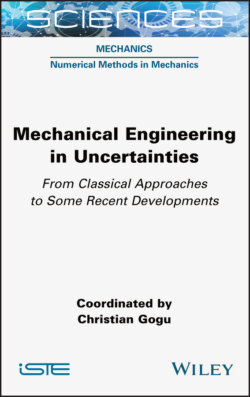Читать книгу Mechanical Engineering in Uncertainties From Classical Approaches to Some Recent Developments - Группа авторов - Страница 22
1.6. Fuzzy set theory
ОглавлениеWhile bounds on an interval may be sufficient to quantify epistemic uncertainty within the context of interval analysis, there are many situations where additional information is available, making it possible to refine uncertainty quantification.
Let us consider the case where experts believe that the Poisson ratio of a material is bounded by the interval [0.2;0.4] for a given material. It is very likely that, with their expertise, they will be able to provide a more refined analysis. For example, they can state that most of the time the Poisson ratio of the material will be between 0.3 and 0.35 and only in rare cases it will fall outside this narrower range. This information on the epistemic uncertainty provided by experts can be modeled within the context of fuzzy set theory by a trapezoidal membership function, as illustrated in Figure 1.6. The values in the interval [0.3;0.35] are the most likely values and their corresponding value in terms of the membership function is 1. The membership function then linearly decreases down to the bounds 0.2 and 0.4 provided by the experts. For any value α of the membership function, we can obtain an interval on the quantity of interest, called α-cut. In the example in Figure 1.6, we illustrate the interval for a level α = 0.6, denoted 0.6-cut.
Triangular membership functions are also frequently used in fuzzy set theory. They allow a single value to be modeled as the most probable, as well as bounds outside which the quantity of interest cannot be located. More generally, any kind of membership functions can be used, but this is very rare, in practice, because of the difficulty of specifying them for concrete problems.
Figure 1.6. Illustration of a trapezoidal membership function in fuzzy set theory
As with previous approaches, a fundamental question concerns the propagation of uncertainties through a function g. As for any value α of the membership function, we can associate an interval; this is tantamount to ultimately performing interval analysis propagation at each level α. The methods discussed in the previous section apply in this way. Purely algebraic propagation is also possible for simple operations (additions, multiplications, powers). For a more detailed view of fuzzy set theory, the reader may refer to Zimmermann (2011).
One of the major drawbacks of fuzzy set theory lies, as for interval analysis, in the absence of a measure of uncertainty, which is equivalent to probability in probability theory. Uncertainty propagation is carried out at a level α, but the link with a measure allowing the quantification of the risk associated with this level α is still missing. In order to remedy this, a measure of uncertainty called possibility has been introduced. This has led to possibility theory, which will be presented in the next section.
